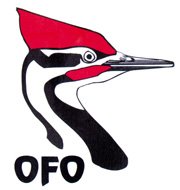| Why it is Important to Write Rare Bird Reports |
Guide to Documenting a Rare Bird Sighting |
Reporting Form Outline | |
| South Review List |
Central Review List |
Lowlands Review List |
Subspecies Review List |
OBRC Guidelines for Reporting
Why it is Important to Write
Rare Bird ReportsTop
Written by Alan Wormington, September 2006.
The OBRC and OFO have regularly promoted “How to write a Rare Bird Report”, but rarely has it been discussed why it is important to fully document rare sightings. If the birding community were more aware of the importance and value of documenting their sightings, it is probable that the number and quality of Rare Bird Reports would increase greatly.
Some of the reasons why it is important to write Rare Bird Reports
So that information about a rare bird sighting can be permanently archived. OBRC records are archived at the Royal Ontario Museum, Toronto, where they are available to interested researchers now and, more importantly, in the future.
So that information about a rare bird – date(s), location, observers, age and plumage, etc. – is accurately recorded; otherwise, such information on the bird may be lost, incomplete or inaccurate.
Because 20, 50, or 100 years from now an archived Rare Bird Report will retain its value; in contrast, over time an undocumented sighting may have little or no value.
Because rare birds are no longer collected. In lieu of a specimen, a written Rare Bird Report is acceptable if it includes a comprehensive description of the bird. In most cases a Rare Bird Report cannot replace the value of a collected and preserved specimen, but certainly a fully documented sighting via a Rare Bird Report has much greater value than an undocumented sight report. A photograph or song recording is worth a 1000 words. If you do not have a photograph/song, then be prepared to write a long and very detailed description. Even if there is a photograph, circumstantial details add greatly to the value of the report and should always be included.
Because it is often difficult to determine which reported observations are valid and which are probably misidentifications. Rare Bird Reports greatly assist in making these determinations.
To provide accurate information for a researcher who may be studying the species in question, or for a researcher/author who may be preparing a book on the birds of a particular region. Recent projects that have benefited from OBRC files archived at the ROM include The Birds of Elgin County, The Birds of Hamilton, The Birds of Algonquin Provincial Park (in progress), and The Birds of Point Pelee (in progress).
If a rare bird is found dead, the finder should make sure the specimen reaches a museum, preferably the Royal Ontario Museum or the Canadian Museum of Nature, where it can be permanently housed for the benefit of others. Even dead birds in terrible shape can provide tissue samples that will allow positive identification.
Don’t let the value of a sight record be lost by not thoroughly documenting it. Please don’t leave it to other people or assume it is someone else’s responsibility!
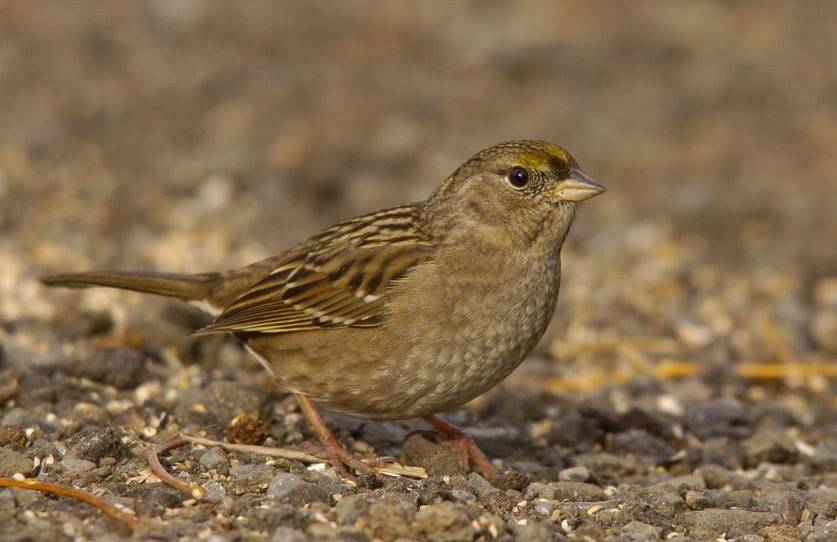
Golden-crowned Sparrow
1st basic
Photo: Mike McEvoy
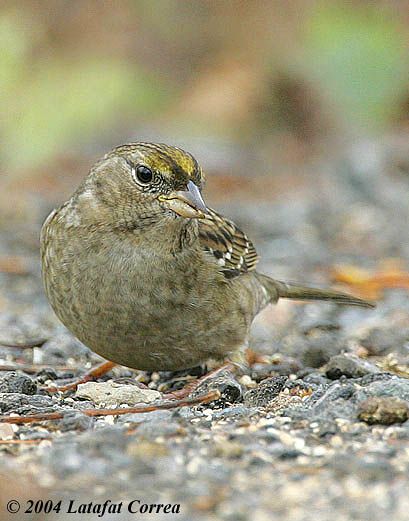
Golden-crowned Sparrow
1st basic
Photo: Latafat Correa
Guide to Documenting a Rare
Bird SightingTop
Written by Peter Burke on behalf of the OBRC
Today, birders rather than professional ornithologists often discover changes in bird distribution and new field identification criteria. Formerly, the scientific community required specimens, otherwise non-specimen evidence was largely dismissed. Birding is very popular and there are rare bird committees in many provinces and states in an attempt to bridge the gap between specimen and non-specimen records. Here in Ontario we have the Ontario Bird Records Committee (OBRC), a panel of seven experienced amateur and professional ornithologists.
After being evaluated by OBRC members, rare bird documentation is archived at the Royal Ontario Museum. The results of the committee’s reviews of these reports are published once a year in the August issue of Ontario Birds. To limit the number of reports, the OBRC has separate Review Lists of species for the South, Centrl and Lowlands review zones in Ontario for which we request documentation. We also have a Subspecies review list. The species and subspecies on these lists occur less than five times a year on average, and no more than 20 times in a given five year period. Thus, they are “the rarest of the rare” occurrences.
When you submit a record to the OBRC you contribute to scientific knowledge, such as helping to decipher vagrancy patterns, documenting the first stages of expansion in a species, or the last records of a decline. When you include detailed information, your record will be more useful to future researchers. It is possible that a rejected record could be validated at a future date when additional information about field characters or distribution patterns becomes available.
An observation/occurrence that pertains to more than one individual of a species is written up as one report. However, please provide detail on individual variation within the group if possible. Even if your documentation is a clear unmistakable photo, video or a recording, please also include the details required of all Rare Bird Reports.
Rare Bird Report
A. Miscellaneous Details
These are basic important details about the observation and are quickly filled in:
1. Species, sex, plumage, number of birds.
2. Location: try to be very specific. Include County, names of roads, etc. Provide GPS coordinates if you have them.
3. Date, time of observation, duration of observation. If known, include all the dates the bird(s) was known to be present as this greatly aids the efforts of our secretary.
4. Type of optics used. Give brand and magnification of binoculars and telescopes used.
5. Weather conditions. Include percent cloud cover, precipitation, wind strength and direction, general lighting conditions (i.e. bird was illuminated from behind or in front), temperature.
6. Observers. Your name and address, plus names, addresses of other observers present. Include the original finder’s name if known.
7. Date of writing. Try to complete the report as soon as possible, but always indicate the date it was written.
8. Distance from the bird. This is usually an estimate, but try to give an idea of how far away from you the bird was.
B. Circumstances
Many observers supply insufficient information regarding the circumstances of the sighting. This information is important and should be carefully written. Relay the events leading up to the finding and identification of the bird. Give an idea of how long the observation/occurrence lasted and how well you got to see it. This is the “story” of how you came to find your rarity!
C. Description
Here is the heart of the documentation. The best approach is to break it down to five parts:
1. Size and Shape
2. Plumage
3. Bare Parts (bill, eyes, legs, etc.)
4. Behaviour
5. Vocalizations
In your description, be objective and concise. Always use your own words and avoid jargon from other observers and field guides. Don’t say things like “the Lark Sparrow had a black, brown and white face pattern”. It sounds like you took it right out of your field guide. Plus that description is rather subjective and doesn’t adequately describe the head pattern of a Lark Sparrow. Strive to describe intricacies of plumage pattern, coloration and condition of the plumage (e.g. obvious molt or plumage wear). Critical identification features (field marks) should be emphasized. No level of detail is too much.
1. Size and Shape
This is the best place to start your description. How big was the bird? Use benchmark species such as sparrow, robin, pigeon, crow
and goose to gauge your species. Compare the bird you are describing to one you are familiar with or one that is present, e.g.
“slightly smaller than a robin”. When describing shape features, use benchmarks and modify to fit your bird
e.g. “longer tailed than a House Sparrow” or “slimmer in structure and shorter legs than a Great Blue Heron
with which it stood”.
Often shape and size are key characters that don’t vary like plumage features. These features may make the difference in a report.
2. Plumage
Almost any field guides has a diagram of the topography of a bird. The ability to name the various parts of a bird’s plumage is a
fundamental skill of birding and makes the job of describing it much easier. By referring to such a diagram we can construct a
precise and accurate description. When describing colors, try to refrain from subjective statements like “sandy”
brown. Unless you are certain of specific color names, attempt to keep it simple. “Purplish-blue”; or “reddish
orange” is better than “royal blue” or “scarlet red”. It is also useful to describe how deep
or light the coloration is. Alternatively, say what bird the colour/pattern reminds you of: “its back was the colour
and pattern of a male Yellow-rumped Warbler”.
3. Bare Parts
Bare parts means any part of the bird that is not feathered, notably bill, legs and eyes. Refer to the topography diagram in your
field guide. Keep the coloration simple. Try to use comparatives if there are other birds around e.g. “the bill was
notably slimmer and shorter than nearby Ring-billed Gull’s and more greenish in color”. Note that the words
“slimmer and shorter” provide more information than “smaller”. The more descriptive the report is the better.
4. Behaviour
Sometimes a strange bird is first noted because it is acting in a conspicuous manner. Try to describe its activities as accurately as
you can while you watch it, even if the bird just sits there! Behaviours can differ very subtly between similar species so
attempt to be specific: “the bird pumped its tail upwards from the resting position”. Again, your field
guide’s introduction describes aspects of behaviour; flight style, swimming profiles, perching profiles, etc.
5. Vocalizations
No matter how soft or inconspicuous a noise the bird makes, attempt to describe it. This can be difficult and often the use of
phonetics (putting human words to a bird’s song) is impossible. However, you can describe the general type of sound
being produced; was it long or short, loud or soft, clear and liquid or a harsh chatter? Was it jumbled, continuous or
crescendo? Like a bird’s plumage, you should describe it with more than one word.
D. Elimination of similar species
List other species that you considered in your identification and describe why it wasn’t any of these. This is most important.
E. Experience with claimed species
If you have previous experience with the species you claim, give details from where and how long ago. Provide this information for similar species you considered as well.
F. Photographs/ Video/ Recordings
The best way for an observer to document an occurrence is to photograph it or record the bird’s calls/song. Even when this is possible, still make a written description of the bird. Take multiple photos showing different poses, as some critical features of the bird may not be seen in one exposure or a shot may turn out blurry. Always keep a photo in the event of an accident in the transmission or duplication process of submitting your record. Digital photography and video are increasingly popular modes of documentation.
The OBRC welcomes your reports and we encourage you to send them to us. We hope that this article is instructive and that you will enjoy preparing a Rare Bird Report when you bump into your next rarity!
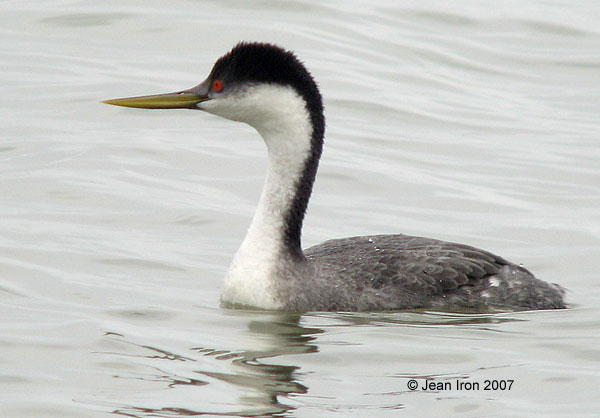
Western Grebe
Photo: Jean Iron
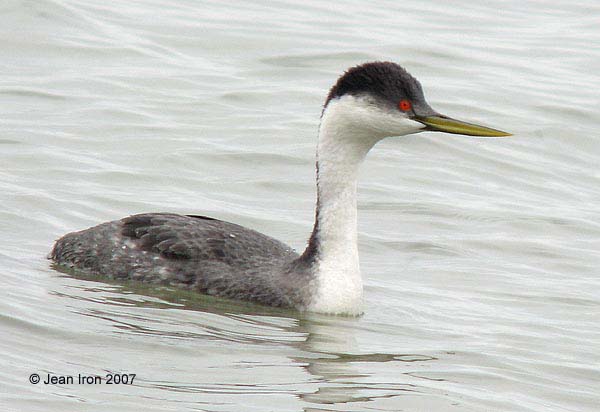
Western Grebe
Photo: Jean Iron
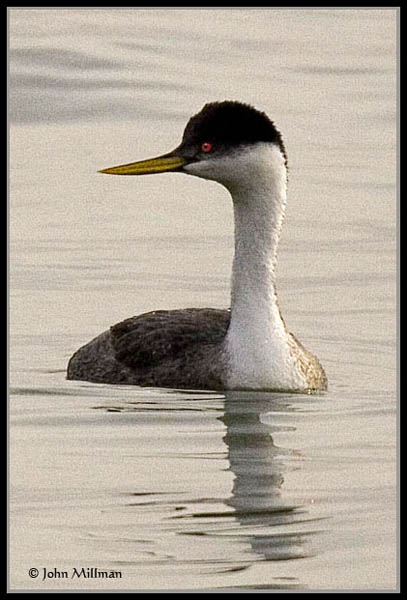
Western Grebe
Photo: John Millman
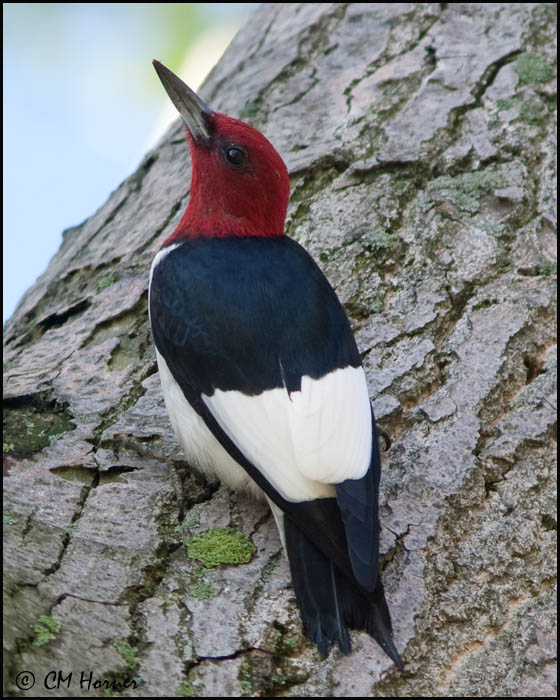
Red-headed Woodpecker
Photo: Carol Horner
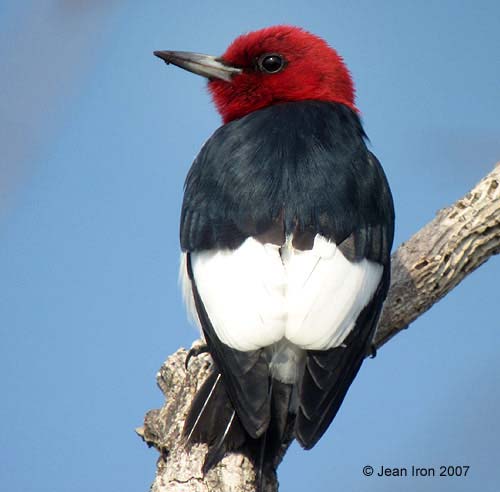
Red-headed Woodpecker
Photo: Jean Iron
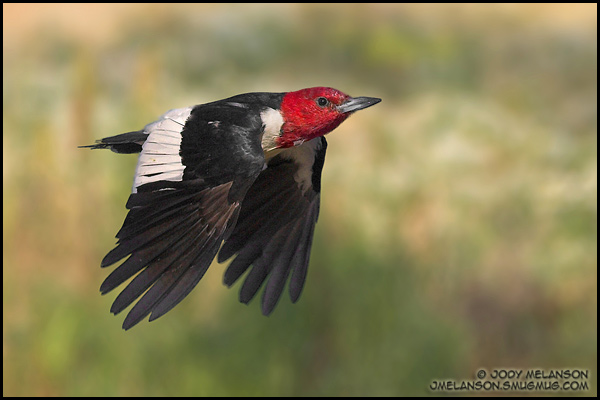
Red-headed Woodpecker
Photo: Jody Melanson
Reporting Form OutlineTop
This outline is designed to help you prepare a Rare Bird Report. Use the topics below as your guide when writing your report. Take as much space as you need to provide as much detail as possible for each section. If you have drawings or photographs, please send them or copies to the OBRC Secretary. You can also submit your report online.
Suggested procedures when you find a rare bird
While the bird is still in view, write a complete description of its appearance by systematically studying every aspect including size, shape and plumage, etc. If necessary use anything you can find – any piece of scrap paper will do!
Later the same day, or as soon as possible, compare your written description to books and other resources to ensure you have made a correct identification. Then prepare your final report (typed if possible) to include additional details. Include a description of the bird in a clear and concise fashion, based on your original notes.
Send your completed report to the OBRC for review. Reports prepared in the above fashion are the easiest to establish that a correct identification has been made. They provide an excellent contribution to the study of birds in Ontario.
Suggested outline for your Rare Bird Report
Species
Number/Gender
Age/Plumage
Observation dates and dates the birds were observed by others if known
Time and length of observation
Location (and GPS if known)
Habitat
Weather
Lighting on bird
Distances from bird
Optics used
Photographs taken?
Date of writing report
Circumstances of the observation. Describe how you discovered or heard about this bird.
Description. This is the most important part of your report. Include only what was observed in the field. Describe entire bird and the diagnostic field marks you saw. Suggested headings: a. Size and Shape; b. Plumage; c. Bare Parts (bill, eyes, legs, etc.); e. Behaviour; f. Vocalizations.
How were similar species eliminated? Very important. Explain why the bird was the species you are describing and not a similar species.
Experience with this species and similar species.
Field guides/references used.
Any additional commentary/analysis.
Description made from: a) field notes, b) notes made after observation, c)memory
Reporting observer’s name, postal address, E-mail address, phone number
Other observers, addresses; include finder’s name if known
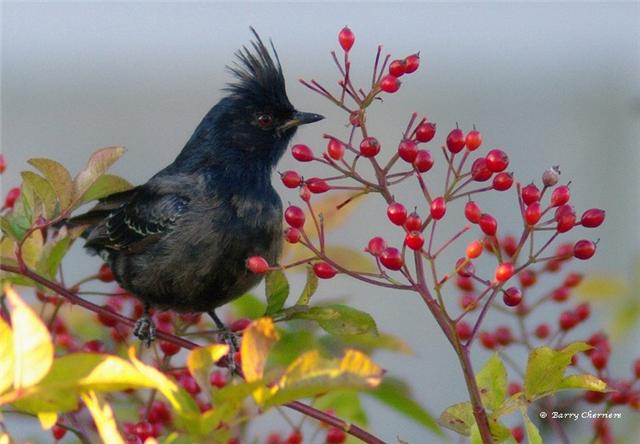
Phainopepla
Photo: Barry Cherriere
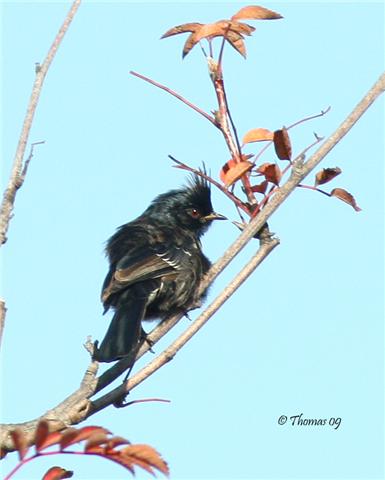
Phainopepla
Photo: Tom Thomas
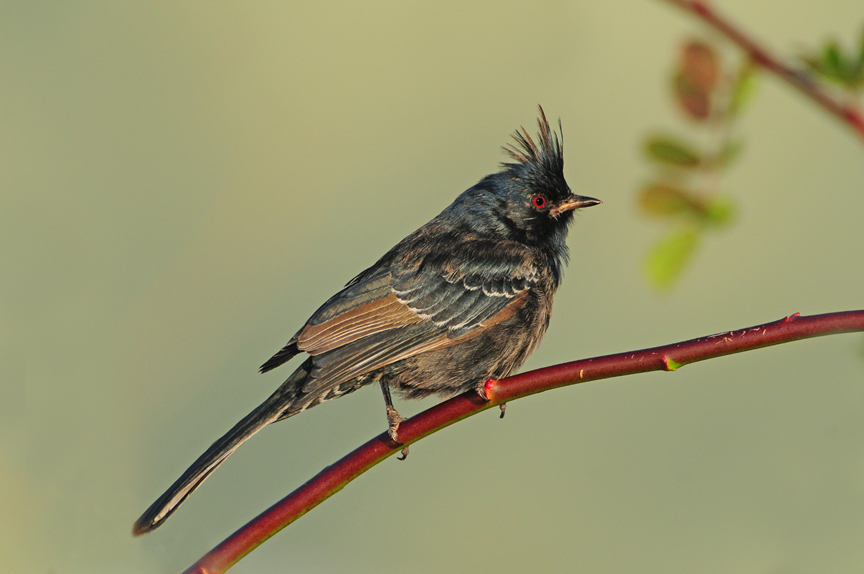
Phainopepla
Photo: Sam Barone
